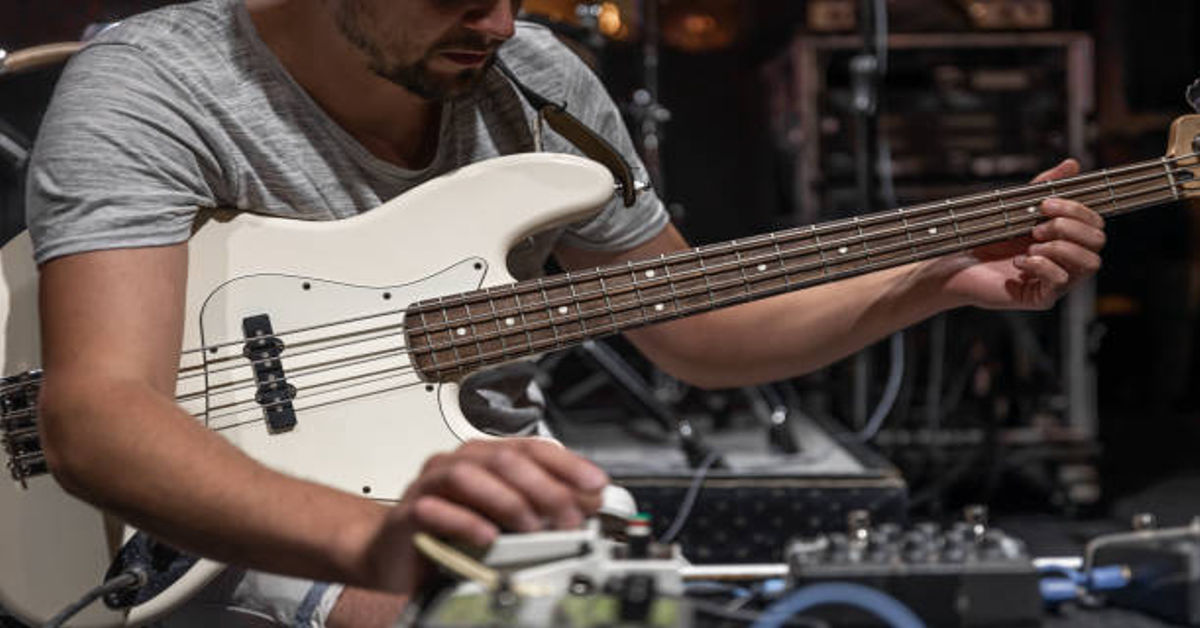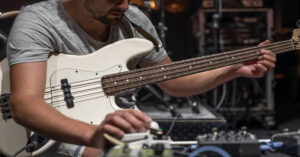Transitioning from bass to guitar is a common path for many musicians who want to expand their musical versatility. While bass guitar and guitar share certain similarities in their design and theory, they differ in techniques, role in a band, scale length, string tension, and musical expression. Understanding these distinctions is crucial for a bass player aiming to successfully adapt to the guitar. This article delves deep into the nuances of moving from bass to guitar, providing a detailed guide on technical skills, theory, musical application, and practice strategies. It also addresses how musicians can leverage their existing bass knowledge to accelerate guitar learning while avoiding common pitfalls.
1. Understanding the Structural Differences
Although both the bass and the guitar fall under the stringed instrument category, their structure, string count, and tuning differ, significantly influencing how they are played and heard.
A. Number of Strings
Most standard bass guitars have four strings, although five- and six-string models exist. Standard guitars typically have six strings, though seven- and eight-string variants are also available for extended range.
- Bass Strings: E1, A1, D2, G2 (standard 4-string tuning)
- Guitar Strings: E2, A2, D3, G3, B3, E4 (standard 6-string tuning)
The octave difference between bass and guitar creates a fundamental shift in tone and function, as bass frequencies primarily provide rhythm and harmonic foundation, while guitar frequencies focus more on melody, chords, and solos.
B. Scale Length
The scale length—the distance between the nut and bridge—affects string tension, playability, and sound. Standard scale lengths are:
| Instrument | Typical Scale Length | Impact on Playability |
|---|---|---|
| Bass | 34 inches | Longer reach, thicker strings, lower pitch |
| Guitar | 24.75–25.5 inches | Shorter reach, higher pitch, lighter string tension |
The shorter scale of the guitar makes it more suitable for chordal work, intricate fingerpicking, and faster soloing.
2. Differences in Musical Roles
Understanding the functional differences between bass and guitar in a band context is essential for a smooth transition.
A. Bass Role
- Provides rhythm and groove foundation
- Anchors the harmonic structure
- Reinforces drum patterns
- Plays longer, sustained notes
B. Guitar Role
- Plays chords, riffs, and solos
- Adds melodic and harmonic textures
- Often drives song dynamics with strumming patterns
- Incorporates fingerstyle, tapping, and sweep picking
By grasping these roles, a bass player can anticipate how to adapt their playing style when switching to guitar.
3. Tuning and Notes Relationship
The relationship between bass and guitar notes is crucial. A standard 4-string bass is tuned one octave lower than the lowest four guitar strings.
| Bass String | Corresponding Guitar Octave | Notes |
|---|---|---|
| E1 | E2 | Low E string on guitar |
| A1 | A2 | 5th string on guitar |
| D2 | D3 | 4th string on guitar |
| G2 | G3 | 3rd string on guitar |
This knowledge allows bass players to quickly identify familiar patterns when learning guitar scales and chord voicings.
4. Techniques and Playing Style Adaptation
Bass and guitar techniques differ, and adapting them is critical for effective transition.
A. Fingerstyle vs. Pick
- Bass: Many bassists use fingerstyle, plucking strings for a smooth, controlled tone.
- Guitar: While fingerstyle exists, most guitarists use a pick for faster picking, strumming, and precise articulation.
A bass player must practice pick technique to execute guitar strumming patterns and lead lines efficiently.
B. Fretting Techniques
- Bass: Fret hand focus on long, sustained notes and slides.
- Guitar: More frequent chord changes, bar chords, hammer-ons, pull-offs, and complex scales.
C. Muting
Guitarists must learn both left-hand and right-hand muting to prevent string noise during solos and rhythm passages. Bass players already use muting but must adjust for faster chordal passages.
5. Scales and Theory Transition
A strong foundation in bass scales and theory can accelerate guitar learning, but guitar introduces additional complexities:
- Chord Voicings: Guitarists play multiple notes simultaneously, often in chord shapes that differ from bass double stops.
- Extended Scales: Guitar incorporates modes, pentatonic, blues, harmonic minor, and diminished scales across six strings.
- Finger Patterns: Guitar fretboard offers more patterns due to extra strings and frets.
Table: Scale and Chord Comparison
| Concept | Bass Focus | Guitar Focus | Adaptation Tips |
|---|---|---|---|
| Major Scale | Linear, one string or position | Multiple positions, across strings | Map bass knowledge across fretboard |
| Minor Pentatonic | Common in blues/rock bass | Key for solos and riffs | Learn string transitions for soloing |
| Chords | Rare, power chords | Essential, full chords | Practice barre chords and inversions |
| Arpeggios | Simplified for grooves | Full arpeggios for leads | Use bass arpeggio knowledge for guitar shapes |
6. Chord and Harmony Considerations
Bass players often play single notes and rely on guitar or keyboard for harmonic context. Transitioning requires understanding:
- Chord Shapes: Barre, open, power chords, suspended chords, and extended chords
- Chord Progressions: Writing rhythm parts that support songs
- Voice Leading: Smooth transitions between chord voicings
Practicing chord inversions and common progressions helps bassists create fuller guitar arrangements.
7. Practice Strategies for Bass-to-Guitar Transition
Transitioning efficiently requires structured practice:
A. Technique Drills
- Alternate picking exercises
- Chord transitions (major, minor, seventh)
- Finger exercises to improve dexterity
- Scale sequences across strings
B. Song Adaptation
Start by playing songs you already know on bass, now translating them to guitar chord progressions or lead parts. This builds confidence and musical continuity.
C. Timing and Rhythm
Focus on rhythm precision. Use a metronome to adapt to faster chord changes and strumming patterns. While bass emphasizes groove, guitar often requires syncopated strumming or rapid picking.
D. Ear Training
- Listen for melody lines in songs you previously played on bass.
- Practice transcribing these melodies on guitar to develop musical intuition.
8. Gear Considerations
Bass players moving to guitar should consider:
- String Gauge: Guitar strings are lighter, allowing more bends and fast passages.
- Neck Width: Guitars have narrower necks, facilitating chordal work.
- Amplification: Guitar amps emphasize midrange frequencies for solos and chords, while bass amps focus on low frequencies.
- Pedals and Effects: Guitarists often use overdrive, delay, chorus, and modulation effects; bassists typically use compression and EQ.
Table: Gear Comparison
| Feature | Bass | Guitar | Notes for Transition |
|---|---|---|---|
| Strings | Thicker, longer scale | Thinner, shorter scale | Easier bends on guitar |
| Amp | Low-end emphasis | Mid-range and highs | Adjust EQ accordingly |
| Effects | Compression, chorus | Distortion, reverb, delay | Expand tonal palette |
| Neck | Wide, long | Narrow, shorter | Easier chord fingering |
9. Common Challenges When Switching
Bass players often face challenges when moving to guitar:
- Chord Mastery: Learning barre chords can be difficult initially.
- Speed: Guitar often requires faster picking or strumming than bass.
- Complex Rhythms: Guitar parts may include syncopation or hybrid picking.
- Lead Playing: Melodic solos demand more precise fretting and finger independence.
Regular practice, patience, and leveraging existing theory knowledge mitigate these challenges.
10. Leveraging Bass Skills on Guitar
Bass experience offers advantages:
- Rhythm Sense: Bassists have strong timing skills, valuable for guitar accompaniment.
- Ear for Harmony: Bass players can identify chord roots and progressions quickly.
- Groove Awareness: Adds swing or groove to guitar strumming and riffs.
- Finger Strength: Bass finger exercises improve guitar dexterity and control.
11. Learning Resources and Approaches
Bassists can transition efficiently using:
- Online Guitar Lessons: Structured programs for chord and lead techniques
- Transcription: Learning guitar parts of songs already played on bass
- Theory Books: Understanding chord construction and inversions
- Jam Sessions: Playing with other guitarists accelerates practical skills
- Recording Yourself: Helps identify technical weaknesses
12. Popular Songs for Bass-to-Guitar Practice
Start with songs that combine simple chord progressions and riffs familiar to bass players:
| Song | Technique Focus | Notes |
|---|---|---|
| “Smoke on the Water” | Power chords | Simple, iconic riff |
| “Wish You Were Here” | Open chords, strumming | Learn transitions |
| “Seven Nation Army” | Single-note riffs | Bass-to-guitar translation |
| “Knockin’ on Heaven’s Door” | Rhythm chords | Develop chord fluidity |
| “Come As You Are” | Arpeggios, picking | Finger coordination practice |
13. Advanced Techniques to Explore
Once basic chords and riffs are mastered:
- Hybrid Picking: Combines pick and fingers
- Tapping: Useful for solos
- Sweep Picking: Arpeggios across strings
- Slide Guitar: Adds expressive melodic movement
- Chord Melody: Combining chords and single notes for lead lines
Bass knowledge of root notes and intervals makes learning these advanced techniques more intuitive.
14. Mindset for a Successful Transition
Transitioning is not just physical—it’s mental. Bassists should:
- Embrace mistakes as learning opportunities
- Focus on musicality, not just technical skills
- Leverage rhythmic and harmonic knowledge
- Practice daily, starting with 20–30 minutes and increasing
- Record and review progress for continuous improvement
15. Conclusion
Transitioning from bass to guitar is a rewarding journey that enhances musical versatility, opens up creative possibilities, and deepens a musician’s understanding of harmony and melody. By recognizing structural differences, adapting techniques, leveraging rhythm skills, and dedicating time to practice, bass players can successfully master guitar performance. The process combines theoretical knowledge, ear training, physical adjustment, and consistent practice. With the right approach, a bassist can become an adept guitarist capable of rhythm, lead, and solo performance, enriching both personal musicianship and collaborative band dynamics.
Frequently Asked Questions (FAQs)
1. Can a bass player easily learn guitar?
Yes, with practice and adaptation of techniques, rhythm awareness and theory knowledge help the transition.
2. What are the main differences between bass and guitar?
Differences include string count, scale length, pitch range, role in bands, and technique requirements.
3. Should a bass player use a pick when playing guitar?
Yes, pick technique is essential for strumming, precise picking, and faster melodic playing on guitar.
4. How long does it take to switch from bass to guitar?
Depends on dedication and practice, but typically several months to achieve functional proficiency.
5. Can bass skills help in guitar soloing?
Absolutely. Knowledge of scales, rhythm, and fretboard awareness aids in melody creation and solos.









